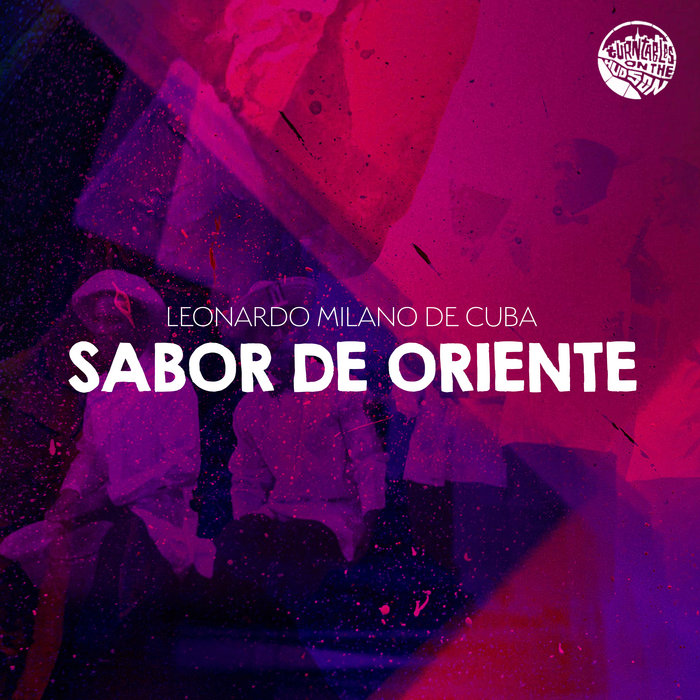
Sabor De Oriente – Turntables on the Hudson
this blog is GROOVY – check out great Soul, Funk, Jazz, Hip Hop, Bass, Breaks , Reggae, House n many more TUNES
Hey there, music lovers! 🎶 Let’s take a funky trip down the rhythmic roads of Changüí, that lively little gem from Cuba. This genre is packed with history, culture, and some seriously groovy vibes. So grab your maracas and let’s get into it!
Changüí kicks off in the late 19th century in the southeastern region of Guantánamo—that’s right, where those famous cigars are born! It originally sprouted from a blend of African rhythms brought over by enslaved people and Spanish melodies twinkling through the air. Think of it as a beautiful stew where diverse musical traditions come together to create something vibrant and energetic!
The roots of Changüí are intertwined with other Afro-Cuban genres. You can hear traces of Son Cubano, but what sets Changüí apart is its unique instrumentation—what we’re talking about are instruments like the tres (a three-course guitar-like instrument), bongo drums, maracas, and sometimes even an accordion making a surprise appearance.
In essence, it’s a party on every street corner in Guantánamo! People would gather around for dance-offs called “palo,” while musicians strummed their hearts out under moonlit skies.
Now let’s break it down: one cool thing about Changüí is its rhythm—it has this infectious groove that makes you want to shake your hips without even trying! It’s usually built on syncopated beats which keep listeners on their toes—perfect for dancing!
A classic ensemble might include:
Did you know that during traditional performances, if someone slips up on stage—even just playing two left feet—the audience might yell “¡Dale más!”? That means “give it more!” instead of booing them off stage! Talk about keeping spirits high!
As time marched forward into the 20th century, changüí began to intertwine with other popular styles like salsa and jazz—a true sign of its adaptable nature. Musicians saw fusion as an opportunity rather than competition; they mixed flavors until they found new grooves to explore.
One standout artist who was influenced by changüí? How about Compay Segundo! He celebrated this vibrant sound throughout his career while introducing it to international audiences through his work with the Buena Vista Social Club.
Ever heard stories about how musicians used bird calls hoping birds would show up at their gigs? Some believed if music could attract local birds there were good vibes ahead—and hey—in Cuba’s lush environment who knows—they might just join you for a jam session!
Fast forward to today—changüí continues thriving both locally and globally! With groups emerging all over Cuba shamelessly paying homage to traditional sounds while integrating contemporary influences from artists around the world—you can say changüí never goes outta style 🕺🎉.
Festivals celebrating changüi happen everywhere now—from intimate backyard parties heavy on jamming spirit down south all through global stages where everyone wants taste what Cuban culture brings… oh la la!
And what’s cooler? In recent years there’s been an uptick in interest among younger generations thanks partly due social media platforms shining light onto these groovy sounds surrounding this fun-filled dance vibe again igniting people’s imagination…and probably leading many late-night kitchen jams (just ask any college student!).
Funny fact time once more!
Many young musicians find themselves having impromptu jam sessions using odd items as instruments—a pot lid being played like castanets or chairs dragged across floors acting as percussive elements…you gotta love creativity when inspired by changui magic ⚡️🥁.
To close things off here—changün puts us all into one big happy family regardless background or experience level because at heart—it celebrates rhythm which unites cultures worldwide 🤝❤️ As we sway together creating moments filled infectious joy—that spirit should carry forth forevermore…and so does laughter shared along journey discovering tunes wrapped within notes promising tales told through generations before us…
So next time someone spins some changui tracks at your gathering don’t be shy!! Kick back relax summon boogie moves deep inside—even if you stumble… remember audience will just shout “¡Dale más!” letting loose feel great no matter how many left feet appear 😉
Let’s continue embracing changing music scenes worldwide honoring past blends reflecting future visions—all while enjoying life celebrating beating hearts still singing strong—we got this groovsters!!
Until next time 🎊✌️ Keep those rhythms alive guys!!!
That wraps up our little homage to Changũi; may its vibrant sound keep calling us deeper into each beat we discover anew 😄

Sabor De Oriente – Turntables on the Hudson